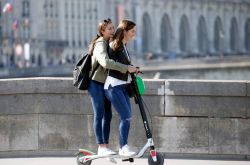今天小编给大家分享一下怎么使用Python和OpenCV库实现识别人物出现并锁定的相关知识点,内容详细,逻辑清晰,相信大部分人都还太了解这方面的知识,所以分享这篇文章给大家参考一下,希望大家阅读完这篇文章后有所收获,下面我们一起来了解一下吧。
1. 安装必要的库
首先,确保您已安装以下库:
OpenCV: 用于图像处理和计算机视觉任务
imutils: 提供一些实用函数,如图像旋转、裁剪等
安装方法如下:
pip install opencv-python
pip install imutils2. 加载和显示视频
首先,我们需要导入所需的库,并加载一个视频文件。我们将使用OpenCV的
VideoCaptureimport cv2
import imutils
video_path = "path/to/your/video.mp4"
# 打开视频
cap = cv2.VideoCapture(video_path)
while True:
ret, frame = cap.read()
if not ret:
break
# 缩放以提高处理速度
frame = imutils.resize(frame, width=600)
cv2.imshow("Input Video", frame)
if cv2.waitKey(1) & 0xFF == ord("q"):
break
cap.release()
cv2.destroyAllWindows()3. 应用预训练的人物检测模型
接下来,我们将使用OpenCV中提供的预训练模型。这里我们使用MobileNet-SSD模型,因为它在速度和准确性之间达到了很好的平衡。
prototxt_path = "path/to/your/MobileNetSSD_deploy.prototxt"
model_path = "path/to/your/MobileNetSSD_deploy.caffemodel"
# 加载预训练模型
net = cv2.dnn.readNetFromCaffe(prototxt_path, model_path)4. 在检测到的人物周围绘制边界框
现在,我们将使用预训练的模型来检测视频中的人物,并在检测到的人物周围绘制边界框。
# 设置置信度阈值
confidence_threshold = 0.5
while True:
ret, frame = cap.read()
if not ret:
break
frame = imutils.resize(frame, width=600)
(h, w) = frame.shape[:2]
# 将图像转换为blob
blob = cv2.dnn.blobFromImage(frame, 0.007843, (w, h), 127.5)
net.setInput(blob)
detections = net.forward()
for i in range(detections.shape[2]):
confidence = detections[0, 0, i, 2]
if confidence > confidence_threshold:
idx = int(detections[0, 0, i, 1])
if idx == 15: # 15 代表人类
box = detections[0, 0, i, 3:7] * np.array([w, h, w, h])
(startX, startY, endX, endY) = box.astype("int")
# 在检测到的人物周围绘制边界框
cv2.rectangle(frame, (startX, startY), (endX, endY), (0, 255, 0), 2)
cv2.imshow("Input Video", frame)
if cv2.waitKey(1) & 0xFF == ord("q"):
break5. 保存和显示结果
最后,我们将处理后的视频保存到磁盘,并在程序完成后关闭所有窗口。
# 创建 VideoWriter 对象以保存处理后的视频
fourcc = cv2.VideoWriter_fourcc(*"mp4v")
out = cv2.VideoWriter("output.mp4", fourcc, 30, (w, h))
while True:
ret, frame = cap.read()
if not ret:
break
frame = imutils.resize(frame, width=600)
(h, w) = frame.shape[:2]
blob = cv2.dnn.blobFromImage(frame, 0.007843, (w, h), 127.5)
net.setInput(blob)
detections = net.forward()
for i in range(detections.shape[2]):
confidence = detections[0, 0, i, 2]
if confidence > confidence_threshold:
idx = int(detections[0, 0, i, 1])
if idx == 15:
box = detections[0, 0, i, 3:7] * np.array([w, h, w, h])
(startX, startY, endX, endY) = box.astype("int")
cv2.rectangle(frame, (startX, startY), (endX, endY), (0, 255, 0), 2)
# 将帧写入输出视频
out.write(frame)
cv2.imshow("Input Video", frame)
if cv2.waitKey(1) & 0xFF == ord("q"):
break
cap.release()
out.release()
cv2.destroyAllWindows()






